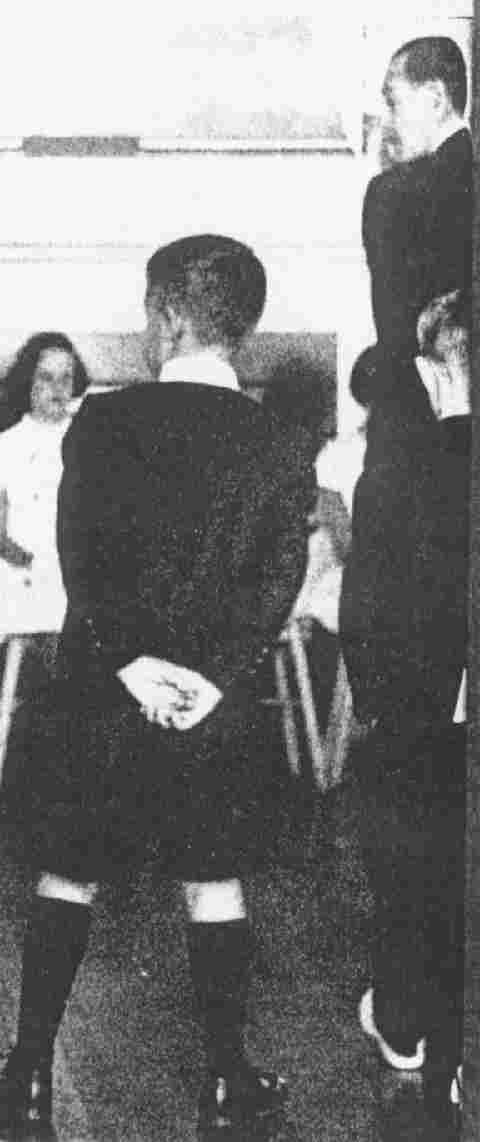
Figure 1.--The boy on the right rights compounds the error of coming to class in saddle shoes by standing with his hands in his pockets.


Figure 1.--The boy on the right rights compounds the error of coming to class in saddle shoes by standing with his hands in his pockets. |
Dancing lessons were conducted with a wide variety of appraoches. Some were straight forward dancing lessons. Other dancing classes were more social seminars. This approach was particularly poular for the chldren of affluent families so that the children acquited the social graces that are so necessary for the well to do. Class routien were also sigbnoficantly affected by the type of dancing school as well who was conducting the classes. Some teachers had a nack at making the lessons interesting, or at least for the boys, as painless as possible.
Available information on the lessons and class routien at different dancing schools, include the following.
Papanti taught dancing to society childrenin Boston from 1836 to 18??. Ronald Story reports in The Forging of an Aristocracy (1980) that `Boston Assemblies' were held beginning in the 1830's at Papanti's ballroom, providing an opportunity for Harvard students to socialize. Though opposed by local clergy, Lorenzo Papanti founded a dancing academy in Boston which became an institution. In Boston and the Boston Legend (1935) Lucius Beebe says, "All good Boston children went to Papanti's, where his lean figure, glossy wig and elegant patent leather dancing pumps, and above all his pointed fiddle-bow, used both as an instrument of correction and harmony, struck terror to all juvenile hearts."
Dodworth founded New York's Academy in 1835 and ran it for 50 years. Allen
Dodworth's Dancing and its relations to education contained no ballroom etiquette, although he did supply numerous illustrations showing the "proper" and "vulgar" manner of holding one's partner. During the last quarter of the 19th century, many authors,
including Allen Dodworth in his 1885 Dancing and its relations to education and social life, were complaining about kicks, slides, and swayings that had become part of waltzing.
Dancing master and composer Dodworth's manual was originally published in 1885 and "new and enlarged" editions were reissued in 1888, 1900, 1902, and 1905.
In this manual, Dodworth gives his perspective on fifty years of changes in social dance. The book covers the galop, racket, waltz and knickerbocker, bows,
quadrilles, the minuet, Virginia reel, and two hundred fifty figures for the German (also known as the cotillon). The manual also includes an illuminating chapter
directed toward dance musicians. An Assistant for A. Dodworth's pupils, was a small, pocketsize manual was intended for the students of well-known New York dancing master and composer Allen Dodworth. The manual states the rules for classes, gives Dodworth's qualifications as a teacher, and covers manners and etiquette. This edition expands on the 1873 edition by providing more information on the waltz and the cotillon or German, for which eighty-nine figures are presented.
Mr. De Rham was the ramrod-stiff figure that taught dancing to the children of the cream of American society. Little boys and girls in their best dark blue suits and party frocks were ushered into his class to learn the social graces and in the process how to dance. Squirming little boys in new Eton suits were taught to sit still. Giggly little girls in white party frocks and Mary Janes wre taught how to sit correctly. These lessons during the
1950s were departed to children with names like Astor, Baker, Chrysler, Ford, Hearst, Whitney, and many others whose parents stood at the pinicle of American industrial life. He is an intenerit dancing master, moving New Port to Palm, to teach the soms and daughters of the rich and famous.
Navigate the Historic Boys' Clothing Web Site:
[Return to the Main dance school page]
[Return to the Main dancing instruction page]
[Introduction]
[Activities]
[Bibliographies]
[Biographies]
[Chronologies]
[Contributions]
[Countries]
[Style Index]
[Frequently Asked Questions]
[Boys' Clothing Home]
Navigate the Historic Boys' Clothing Web chronological pages:
[The 1880s]
[The 1890s]
[The 1900s]
[The 1910s]
[The 1920s]
[The 1930s]
[The 1940s]
[The 1950s]
[The 1960s]
[The 1970s]
